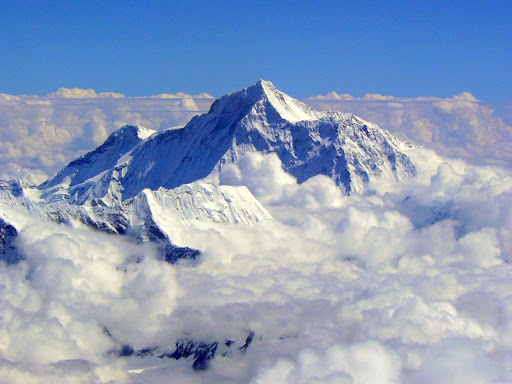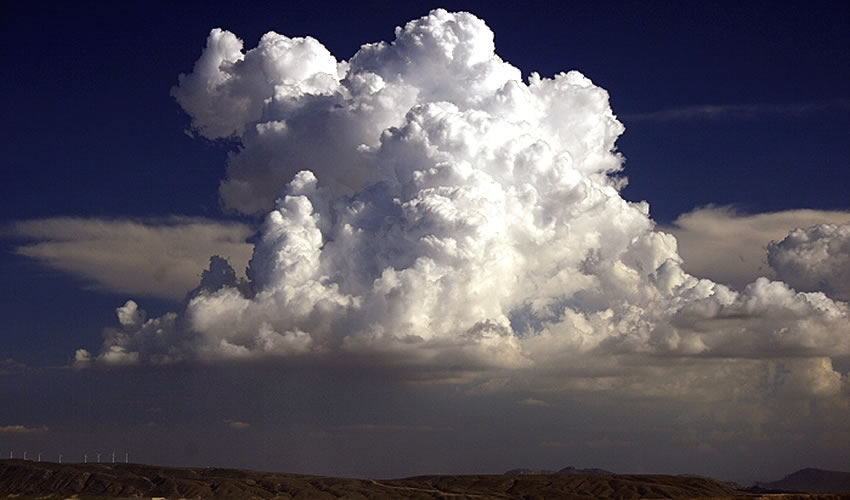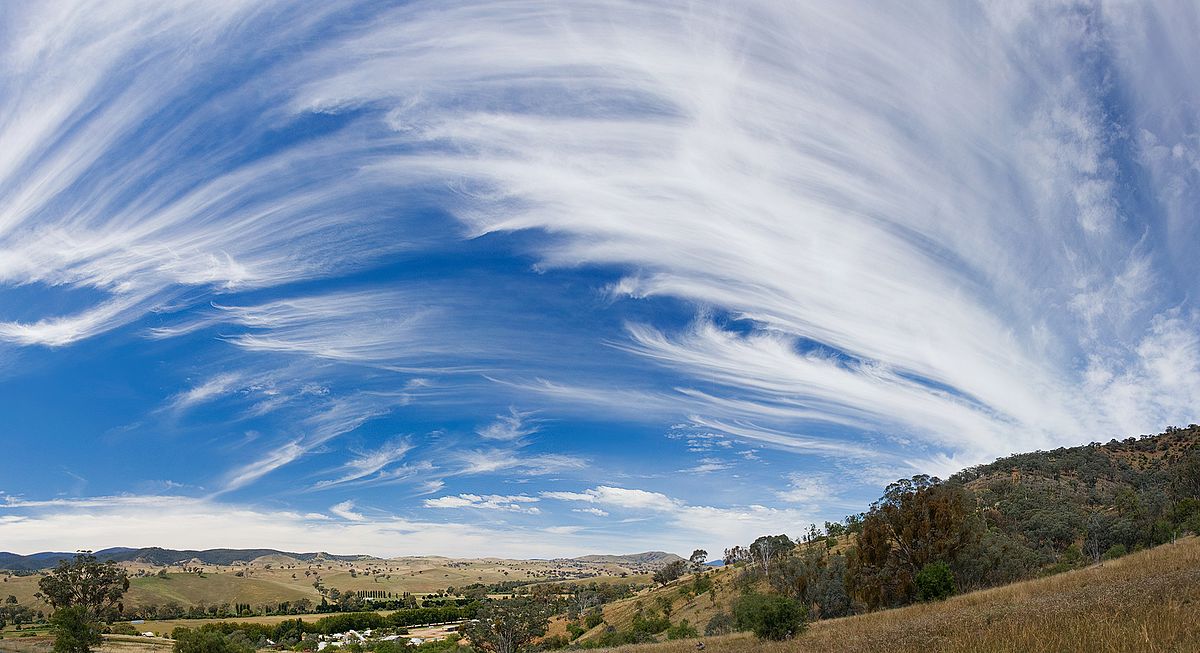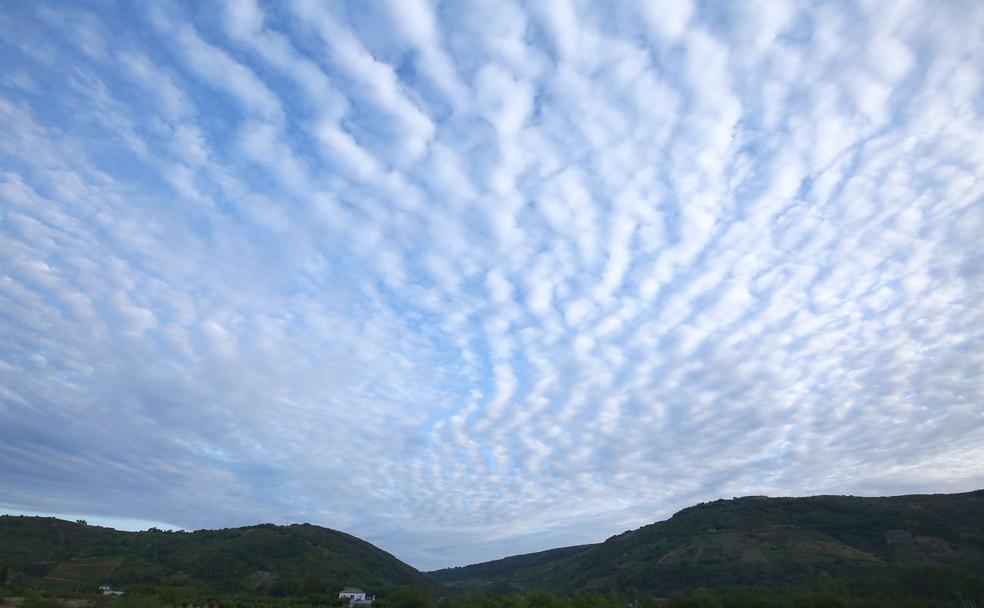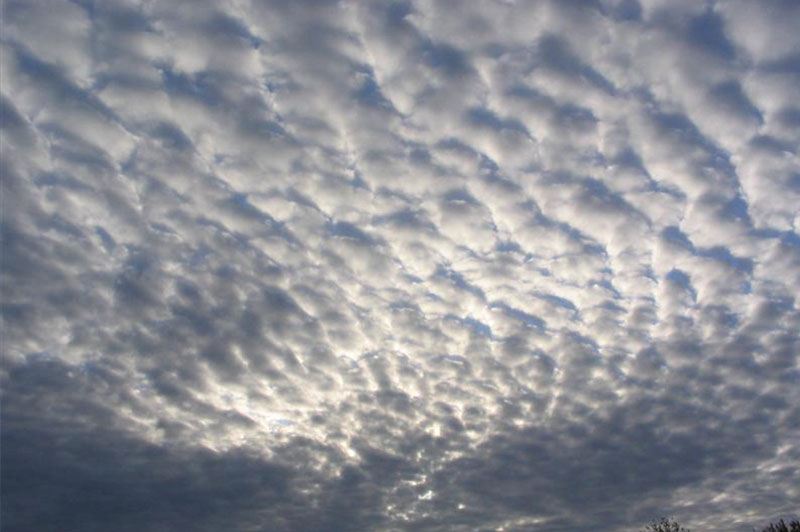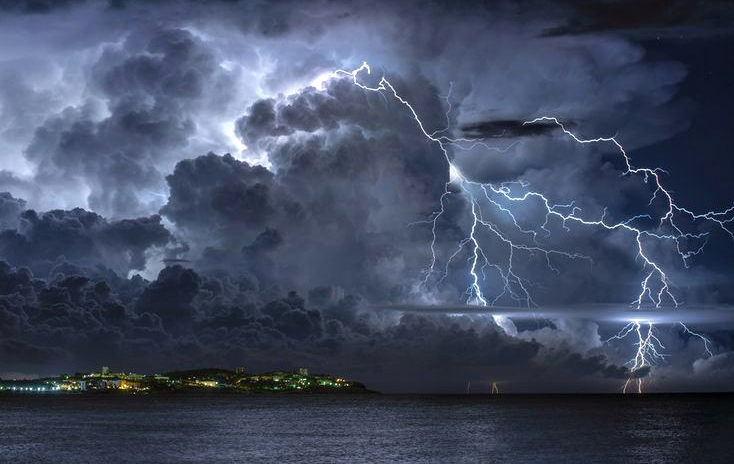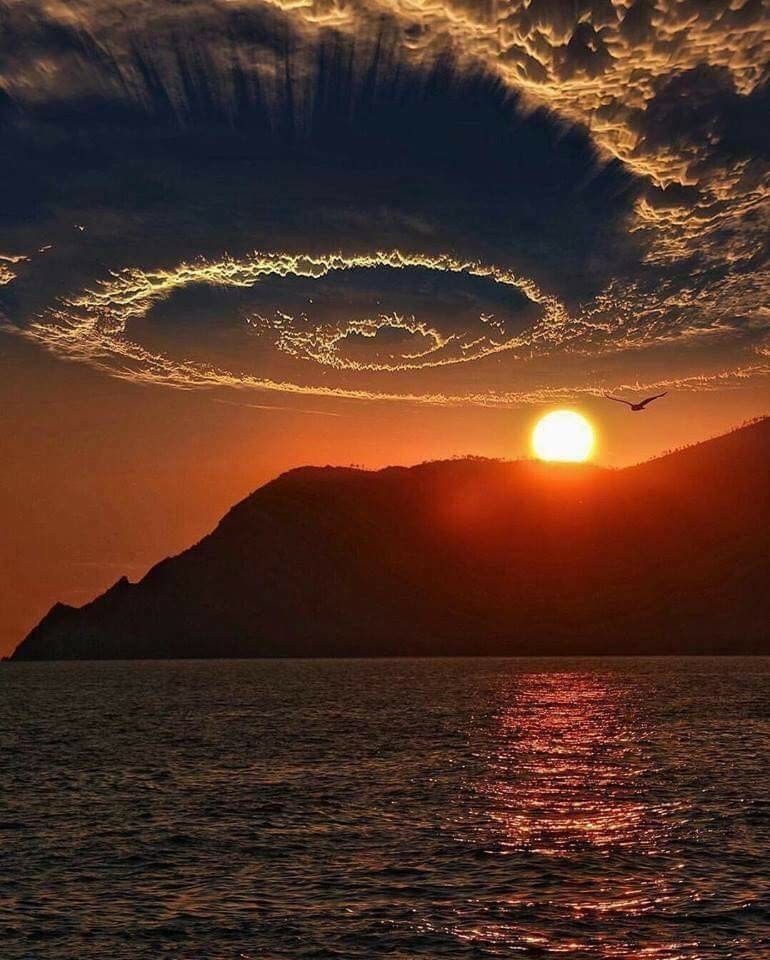The evaporation of water together with temperature and wind, produce the formation of different types of clouds, their creation being fundamental for the circulation and conservation of water on earth.
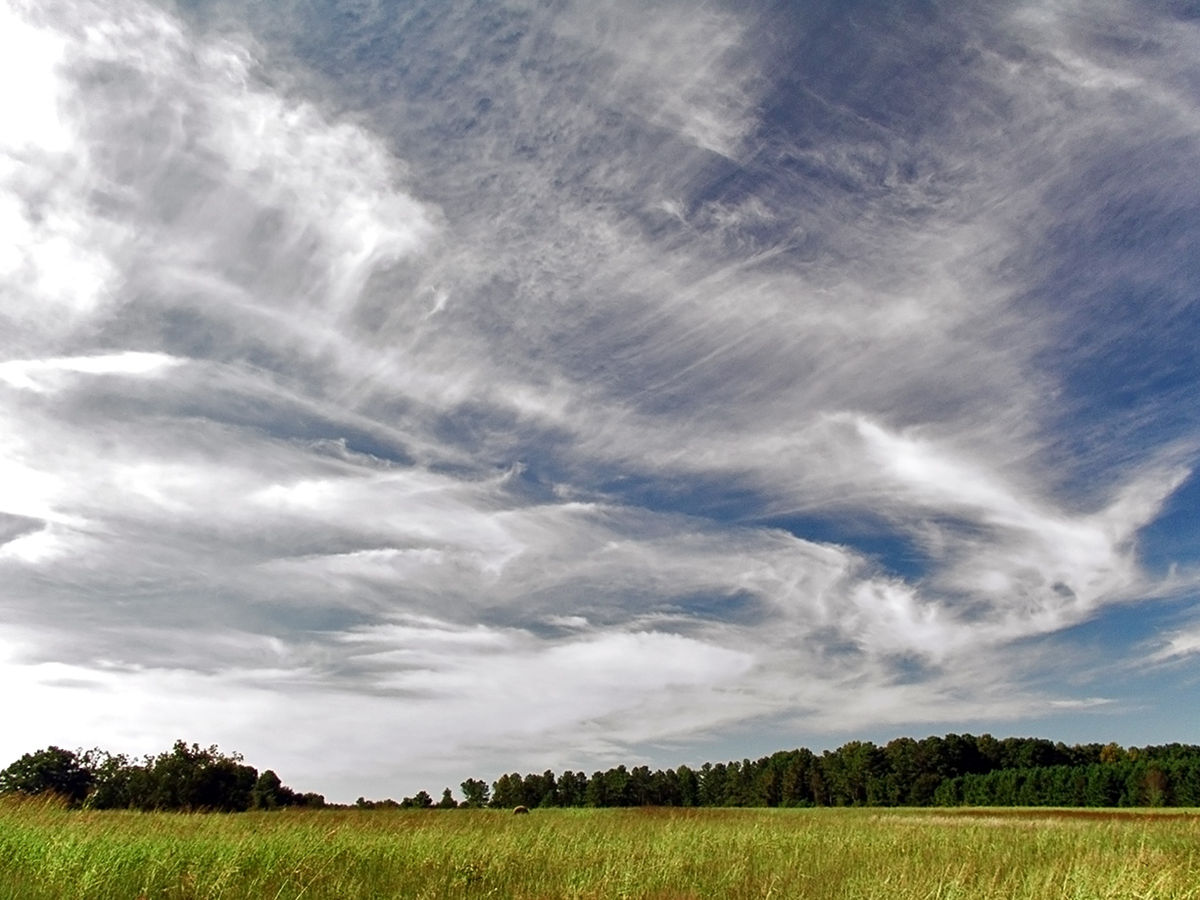
Cloud formation
The creation of clouds is due to the evaporation of water from the surface of the earth, it rises and as it rises, the moist air cools, transforming the vapor into water or small ice crystals.
These, being suspended by the effect of the air circulating in the atmosphere, group together, producing the formation of the cloud. When numerous droplets of water meet, they form thicker drops, which, containing enough weight, can fall and reach the ground, giving rise to precipitation.
Clouds can float as a result of the air mass below them, since this weighs much more than the cloud.
For clouds to persist, new amounts of water vapor must be condensed, so that new drops are formed to replace those that constantly fall and evaporate. Cloud types differ from fog only in their distance from the earth's surface.
Training process
Cloud formation occurs through three processes:
Orographic rising clouds
Clouds that are formed as a result of a mass of hot and humid air, which, when encountering a hill on its way, is forced to ascend to higher levels, where the water vapor condenses and forms this type of cloud. characteristics of mountainous climate regions.
These clouds remain on the cusps where they were developed. Orographic clouds generally have a completely flat horizontal shape and are displayed in various sizes.
Thermal convective clouds
They are the product of movements of vertical air masses, caused by thermal variations between the ground and the upper layers of the atmosphere. They are ascending in areas of high soil temperatures (tropics) and descending in areas of cold soil (subpolar latitudes).
Convection clouds produced by a front
These occur when two large masses of air collide. A warm front collides with a cold front, at that moment the warm air mass slides over the cold air mass, and finding less pressure, proceeds to expand and cool, causing the excess water to condense and form the clouds.
Cloud types
The international meteorological service has established ten types of clouds, divided into four groups, these in turn are subdivided according to their formation and configuration, obtaining classes and subclasses in order to achieve a more accurate classification. Among these are:
high clouds
They develop between 6.000 and 13.000 meters of altitude, because at these heights the air is cold enough, they are made up of ice crystals. High clouds do not precipitate, but may indicate weather variation. Among them are:
Cirro
Light-looking white cloud, often with a silky shine, fibrous and fragile, with the appearance of long strands, similar to those of carded wool.
It occurs in the upper regions, between 6 and 10 km altitude of the atmosphere, without shadows. It is made up of very fine ice crystals (ice needles) due to its formation at high altitudes.
Cirrus clouds take the heat emitted by the Earth during the greenhouse effect and help reflect sunlight without the sun's rays reaching the surface.
Displaced by the effect of the wind indicate a warm front, and possible precipitation. His symbol: Ci.
Cirro-cumulus
Cloud located at altitudes above 6 km, white in color, formed by small spheres that resemble cotton specks, without shadows, arranged in large swarms or rows (cirrous bushes or banks).
It is generally made up of ice crystals and its altitude coincides with that of the lower cirrus clouds. It constitutes the so-called mackerel sky, when it forms large fields.
Other times they are welded to each other, in very fine, white and parallel stripes, which are projected on the blue of the sky.
They are ephemeral clouds, they usually appear together with cirrus or cirrostratus, their appearance regularly precedes the rain. Its symbol: Cc.
Cirrostratus
Cloud in the form of a very white or milky veil, composed of ice crystals, sometimes diffuse in appearance and with a fibrous structure, like that of cirrus clouds. Sometimes it can present a long and wide striated, and reach to cover totally or partially the sky.
This veil appears well trimmed at times, or with fuzzy edges at others. The sun does not have great difficulty passing through the cloud, which is why they produce solar and lunar halos.
They are found at more than 6 km altitude. They are indicators of the arrival of a warm front, it can evolve into altostratus and trigger moderate rains. His symbol: Cs.
Medium Clouds
They do not precipitate, they are created at a height between 2000 and 6000 meters, they are made up of drops of water and, when the temperature is low enough, by some ice crystals, they can totally or partially cover the sky. Among the middle clouds we have:
altostratus
Grayish, bluish or whitish mantle or cloud layer with a robust appearance that is totally uniform or formed by layers with a striated appearance, with a fairly wide horizontal extension, since they can cover the sky totally or partially.
They are made up of ice and water, of little thickness since it allows the sun to be seen. It is approximately between 2 and 6 km high, and although they are medium level clouds they can rise to high levels. His symbol: Ace.
Altocumulus
White or greyish cloud, generally with a shaded part, essentially composed of water droplets.
It occurs at medium altitudes between 2 and 6 km, forming banks or layers of a globular or fibrous appearance, quite spongy with shadows between them, similar to paving.
They are clouds that generally arise at different heights and continuously in conjunction with other types of clouds. They do not usually cause rain, but they can reveal a worsening of the weather in the coming days. His symbol: Ac.
Nimbostratus
Mass of dark, amorphous clouds with torn edges, which causes rain, persistent snowfall or hail.
Nimbostratus can extend from near the ground to heights exceeding 1000 meters.
They appear with strong winds and are associated with warm fronts, and are so compact that they completely hide the sun. They generally cover a large part of the sky, and cirrostratus or altostratus can be seen through their gaps. His symbol: Ns.
Low clouds
They occur at a level below 2.000 meters, they are generally formed by drops of water and they can precipitate. These include:
Stratum
Clouds composed of thin uniform layers, which appear with light winds and are made up of water droplets.
They are located at a maximum height of 2,5 km, they cover the sky evenly, they generally have a gray color and resemble fog.
Occasionally, this type of cloud can produce very light precipitation (drizzle) and when its layer is quite thin, it is possible to visualize the production of a corona of light, around the sun or the moon. His symbol: St.
stratocumulus
Thick and dense cloud in wavy form, of whitish tones generally with dark hues, they appear as a layer of clouds in the position of rows.
They can be formed from altocumulus or nimbostratus, they are made up of drops of water, they belong to the group of low clouds and are located at heights of less than 2 km.
They commonly emerge around sunset and form continuous blankets in winter, rarely accompanied by raindrops or snow pellets. His symbol: Sc.
Vertical Development Clouds
These types of clouds are located a few meters from the surface, they are the product of the accelerated rise of the air and its vertical development, it can exceed 10.000 meters in height. Vertical development clouds include:
Cumulus
Dense cloud of vertical expansion and rounded shape, quite spongy in appearance, whose upper part, has a dome shape, has more or less accentuated protuberances of a bright white color, while the lower part is almost flat.
Cumulus clouds are characteristic clouds of summer days. They form thick masses, with very pronounced grayish or darker shades. Of diurnal formation, they are caused by ascending courses of warm air.
They are located at a height that depends on the temperature and hygrometric state of the lower layers, generally between 1200 and 1400 meters. If the humidity and temperature conditions are favorable, they quickly transform into cumulonimbus clouds. Its symbol: Cu.
Cumulonimbus
Cloud with a vertical structure, originating from a cumulus, extending from 500 meters to the height of the cirrus, of mixed constitution, since in the lower part, it is composed of drops of water while in its upper part it is formed by ice crystals.
Generally, thick masses are formed in an isolated manner with gigantic proportions, with a strong vertical development due to their convective origin. They are tower-shaped and at the top they show a threadlike structure.
They can cause heavy precipitation, in the form of rain, Snowflake or hail, they also cause thunder, lightning and generally occur in the summer. Its symbol: Cb.
importance of clouds
Clouds have a fundamental representation for the conservation and development of life on the planet, they offer multiple advantages and benefits, without them there would be no life on planet Earth, since:
- They contribute to sustaining ecosystems on planet Earth.
- They help spread the sun's energy evenly over the planet's surface and into the atmosphere.
- Clouds hold great credit for climate, weather and life on Earth.
- They help maintain a uniform temperature, since they prevent excessive radiation of the earth's heat, clouds absorb approximately 3% of sunlight.
- Cloud types can represent specific atmospheric situations or weather conditions, hence they are of great importance for weather forecasts.
- They can also prolong the sunset for several minutes, depending on the type of cloud in which the sunlight is reflected.
- They contribute to water cycle and the entire climate system.
- Clouds take in the heat emitted by the Earth during the greenhouse effect and help reflect sunlight without the sun's rays reaching the surface.
- Without them, we would stop receiving the liquid contribution from the sky, therefore the rivers, seas and lakes, as well as all the water deposits, would dry up.
- They provide shade protecting us from the sun's rays.
- The different types of clouds decorate the horizons, as well as being a beautiful source of inspiration.
